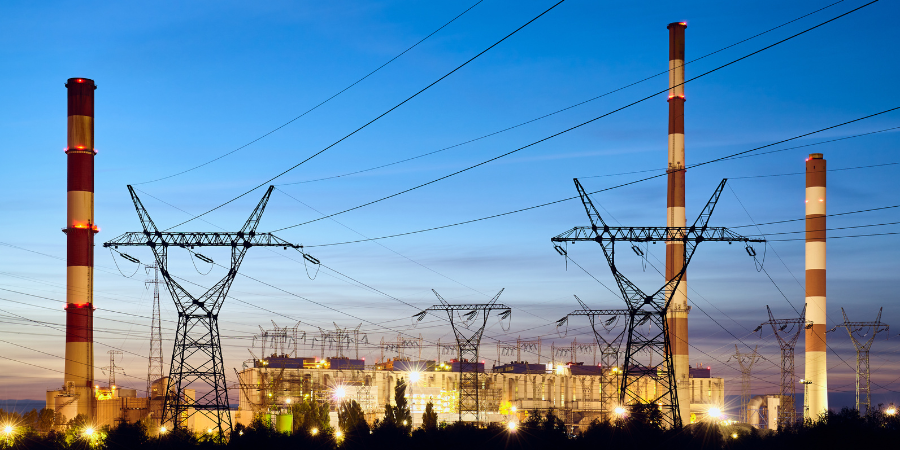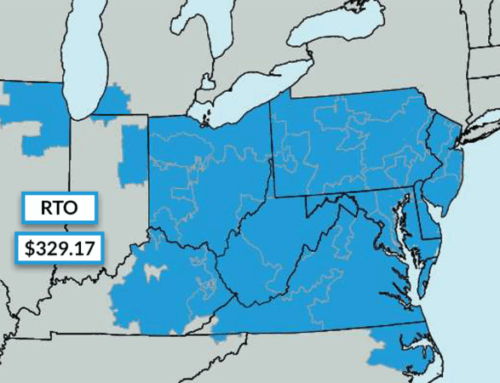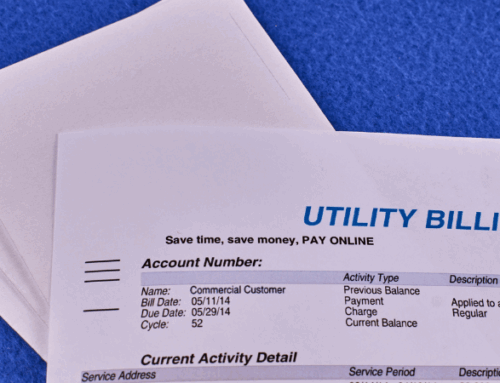Capacity prices play a critical role in ensuring the reliability of the electric grid by compensating power generators for maintaining enough resources to meet peak demand. As the energy market evolves, rising capacity costs are becoming a growing concern for businesses and utilities alike. Understanding these charges, their impact, and ways to combat them is key to reducing energy costs for your business now and into the future. This article aims to provide guidance to commercial and industrial customers who are concerned about future cost increases due to capacity shortages.
What Are Capacity Prices?
Capacity prices are set by capacity auctions held by Independent System Operators (ISOs) and Regional Transmission Organizations (RTOs). In these auctions, power generators bid on their costs to maintain enough capacity to meet future electric demand. Unlike energy charges, which reflect the cost of actual electricity consumed, capacity charges are akin to an insurance policy for the grid to ensure sufficient resources are ready to deliver power.
Projected Increases In 2025/2026
The energy market is facing significant increases in capacity prices, particularly in regions managed by PJM Interconnection, the largest grid operator in the United States. Market forecasts show that capacity prices are expected to rise sharply in 2025 and 2026 due to factors such as increased energy demand, grid modernization efforts, and the retirement of many fossil fuel power plants. PJM’s latest capacity auction resulted in a 500% price increase for the 2025/2026 delivery year. To help curtail these price increases, PJM made a new proposal to FERC in January 2025 that would require battery and solar assets connected to the grid to participate in capacity markets in an effort to increase available resources.
Impact On Energy Customers
Rising capacity prices can have a significant impact on businesses, particularly those with high energy demand. These businesses may see noticeable increases in their monthly energy bills, as capacity charges are calculated based on peak demand in the Summer months.
Planning ahead is critical for businesses looking to minimize the financial impact of these price increases. By understanding energy usage patterns and working with energy market experts, businesses can adopt strategies like reducing peak demand, participating in demand response programs, or investing in on-site energy solutions. Here are some ways to mitigate costs associated with capacity.
10 Ways To Offset Rising Capacity Prices
Rising energy capacity prices present a significant challenge for businesses, but proactive strategies can help offset these costs and improve energy efficiency. By understanding your energy usage, adopting advanced solutions, and working with experienced energy brokers, you can navigate market changes and minimize financial impact.
1. Analyze Your Energy Consumption
Begin by conducting energy audits and utility bill audits to identify inefficiencies and areas for improvement. Understanding peak demand and your load factor is essential to minimizing capacity charges, as these metrics directly impact your costs. Learn more about calculating consumption to uncover hidden savings opportunities in our guide on calculating business energy consumption.
2. Monitor Load Factor
Load factor is a ratio of your demand and usage. Higher load factor means more efficient energy usage in a building and lower capacity charges. Improving the rate at which your facility utilizes electricity capacity can significantly reduce costs. Optimizing load factor is a best practice that can be achieved by lowering peak demand in Summer months, or shifting load during peak hours.
3. Upgrade Equipment
Replacing outdated equipment with energy-efficient options, such as LED lighting, upgraded HVAC systems, and efficient motors, can directly lower energy usage and demand. Additionally, you may qualify for rebates designed to support efficiency upgrades. Some of these rebates for energy-efficient equipment can help to offset the capital investment.
4. Optimize Building Energy Management
Smart technologies and building energy management systems enable real-time monitoring, automation, and demand response control to reduce energy load. These tools allow businesses to track and optimize consumption while avoiding peak demand periods. Coupling automated response from a building automation system with utility incentive programs can be a very effective strategy.
5. Participate in Utility Incentive Programs
Demand response programs reward businesses for reducing energy usage during peak periods. These periods always coincide with the same intervals when capacity tags are set by ISOs and RTOs. By participating in these programs, you can minimize capacity charges and earn additional financial incentives. Learn how demand response can benefit your business in our Guide to Demand Response.
6. Automate Load Shifting
Advanced energy management systems help automate load shifting, ensuring your facility uses electricity when prices are lower and avoiding high-cost peak periods. Automation systems will start and stop motors, or run secondary motor schedules during periods of high demand. This can ultimately reduce your facility’s peak demand and drastically reduce capacity costs.
7. Invest In On-Site Energy Generation
On-site energy generation, such as rooftop solar or natural gas co-gen, reduces reliance on the electric grid and mitigates capacity costs. By implementing on-site power generation, facilities rely less on grid energy and can reduce capacity demand tags that dictate annual capacity payments. These hybrid energy solutions that combine renewables with traditional energy sources can provide even greater reliability and cost savings.
8. Consider Energy Storage
Pairing battery energy storage systems (BESS) with renewable energy solutions allows you to store excess energy and shift usage to backup resources during peak times. BESS assets can also be optimized to participate in the wholesale electricity markets when not being used, creating a revenue stream for the asset owner. This strategy not only reduces capacity costs but also enhances energy independence and provides new revenue sources.
9. Evaluate Fixed vs. Variable Pricing
Consider whether locking in a fixed-rate energy contract or passing through certain market pricing better suits your business needs. Fixed rates provide budget certainty; however, many fixed rates include a margin to cover capacity based on historical capacity tags. This can be an issue if you are actively implementing any of the above strategies. Don’t get stuck paying for capacity that your building is not using simply due to an improper rate structure. Contact an energy broker today to evaluate your options and optimize your supply purchases.
10. Partner With A Professional
Energy brokers bring industry expertise to help you navigate capacity charges, secure competitive rates, and negotiate proper rate structures based on your efficiency plans. A broker’s insights can save time and money, ensuring you make informed decisions.
Contact Our Team Today For Help
In the face of rising energy capacity prices, businesses have an opportunity to turn challenges into cost-saving initiatives through strategic energy management.
If you’re ready to take control of your energy costs, Diversegy’s team of experts is here to help. Contact us today to explore tailored solutions that optimize your energy strategy and safeguard your business against market volatility.



